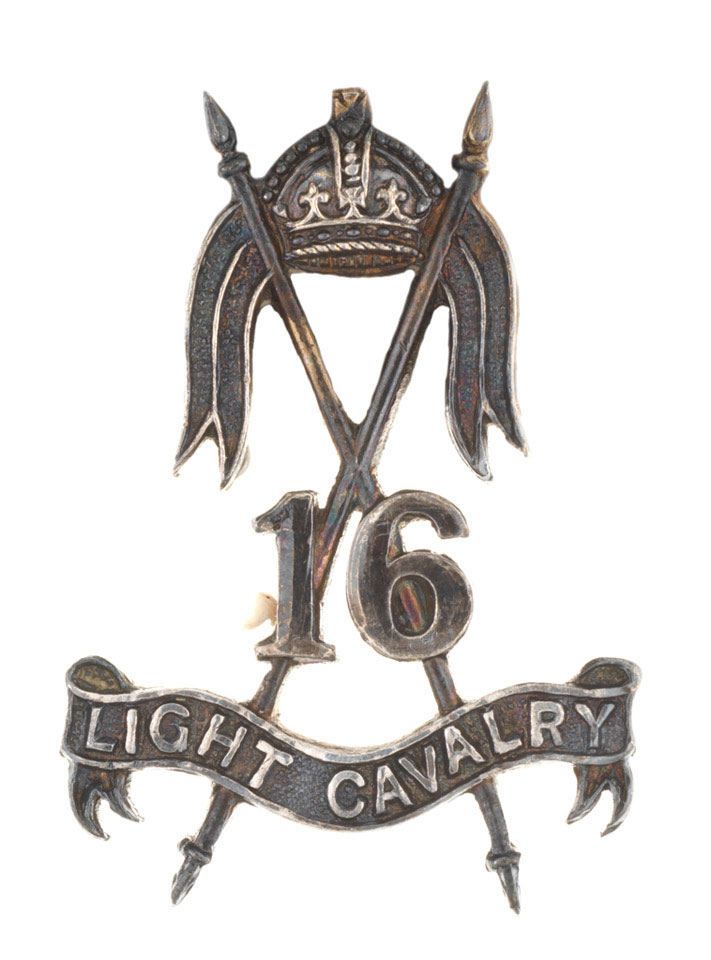
Online Collection
« Prev - 1 of 1 results - Next »
Collar badge, 16th Light Cavalry, 1922-1947
Silver badge, hallmarked 1924, one of a pair, in the form of the regimental number, '16', at the intersection of two crossed lances surmounted by a King's Crown, with a scroll bearing the title, 'Light Cavalry' below.
The 16th Light Cavalry traced its lineage to the 3rd Regiment of Cavalry of the Nawab of Arcot's Army, which entered British service in 1776. It underwent several title changes, including 3rd Madras Native Cavalry (1784), 1st Madras Native Cavalry (1784-1786), 4th Madras Native Cavalry (1786-1788), 2nd Madras Native Cavalry (1788-1819), 2nd Madras Light Cavalry (1819-1886), 2nd Regiment of Madras Lancers (1886-1901) 2nd Madras Lancers (1901-1903) and 27th Light Cavalry (1903-1922).
In 1922 the regiment had been retitled as the 16th Light Cavalry. The following year the regiment was one of the first Indian cavalry regiments to be earmarked for 'Indianisation' - a process where all British officers were replaced by Indian officers. The 16th Light Cavalry was the first regiment to complete this process and was also one of the first Indian cavalry regiments to fully mechanise, having replaced their horses with armour at Quetta in 1941.
For much of World War Two (1939-1945) the regiment remained stationed for the defence of India but in 1945 it was sent to Burma, travelling over 5,600 km or 3,500 miles in three weeks to support General William Slim's operations to liberate Burma.
The regiment's combined battle honours consisted of: 'Sholinghur', 'Carnatic', 'Mysore', 'Seringapatam', 'Burma 1885-87', 'Afghanistan 1919'. For the Second World War: 'Meiktila', 'Capture of Meiktila', 'Defence of Meiktila', 'Rangoon Road', 'Pegu 1945', 'Sittang 1945', and 'Burma 1942-4'5. With the partition of India in 1947, the 16th Light Cavalry was allocated to the Indian Army and remains in service with them to this day.
From the Field Marshal Sir John Chapple Indian Army Collection.
NAM Accession Number
NAM. 2013-10-20-17-38
Copyright/Ownership
National Army Museum Copyright
Location
National Army Museum, Study collection
Object URL
https://collection.nam.ac.uk/detail.php?acc=2013-10-20-17-38


